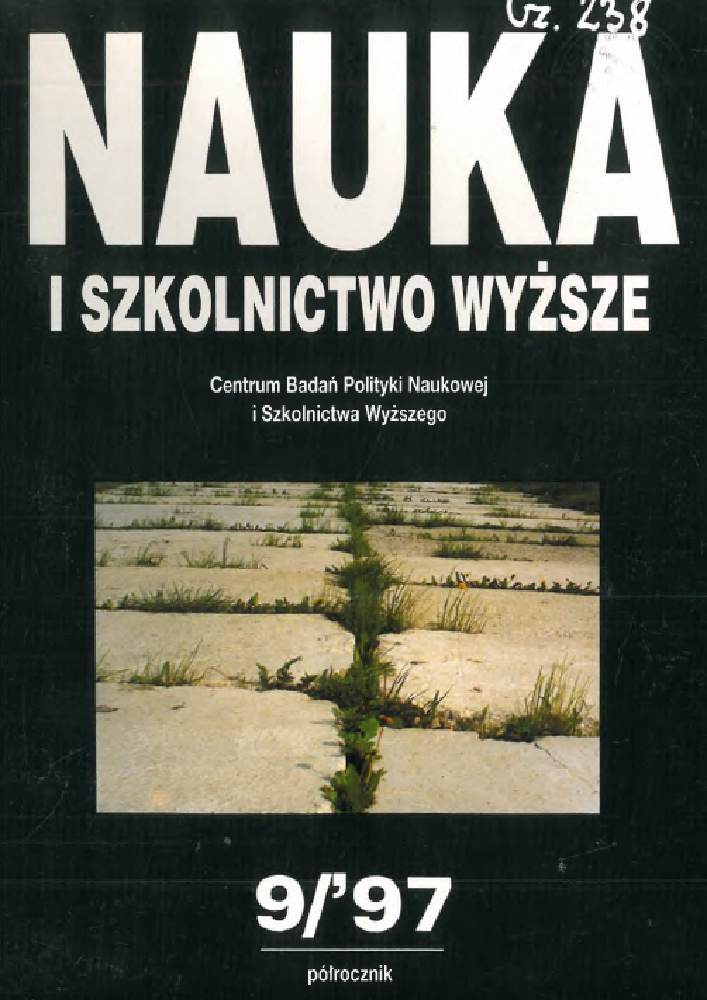Abstract
Basic types of the organizations of education at academic institutions in economically developed countries, referred to as models of the system of study, are defined. Economic and social transformations greatly affecting the functioning of Polish higher education institutions are discussed and, based on this discussion, characteristics of the system of study suitable for the new conditions are formulated. The earlier defined models of the system of study are then assessed with regard to their conformity with these desirable characteristics. Although some of authors’ arguments refer specifically to engineering education, most of the presented observations and conclusions, in particular an assessment of the suitability of various models of the system of study for adoption in Polish academic institutions, are quite general and apply to non-engineering institutions as well.
References
Barnes F. S. 1994 Engineering Education under Attack, „IEEE Trans, on Education”, vol. 37, nr 1, s. 1-2, February.
Berreen T. 1995 Trends in Undergraduate Engineering Degrees in Australia, „Proc. 4th World Conference on Engineering Education”, vol. 2, s. 26-29, St. Paul, October.
Christiansen D. 1992 New Curricula, IEEE Spectrum, s. 25, July.
IEEE... 1992 IEEE Communications Magazine, special issue on engineering education, November.
Denning P. J. 1992 Educating a New Engineer, Communications of the ACM, vol. 35, nr 12, s. 83-97.
Designing... 1992 Designing a Curriculum for the ’90’s - Why Change, Special Report, „Currents”, Winter.
Duggan T. 1992 The Changing Nature of Engineering Education and the Shape of Things to Come, „Proc. 3rd World Conference on Engineering Education”, vol. 1, s. 3-19, Portsmouth, September.
Engineering... 1995 Engineering Education - Designing and Adaptive System, NSF, Washington.
Ernst E. W. 1996 Engineering Plus: Challenges and Choices, „IEEE Trans, on Education”, vol. 31, nr 2, s. 137—139, May.
Goedegebuure L. i in. 1993 Hochschulpolitikim internationalen Vergleich, Verlag ESertelsman Stiftung.
Guran Y., Witteveen F. 1995 Parallel Trends in Engineering Technology Education in the USA and the Netherlands, „Proc. 4th World Conference on Engineering Education”, vol. 2, s. 176-180, St. Paul, Oct.
King R. A. 1994 Socrates, Move Over: Changes in the Education Process for the 21st Century, „Proc. American Society for Engineering Education Annual Conf.”, Edmonton, June.
Kraśniewski A, Woźnicki J. 1996 Modele studiów wielostopniowych: warunki funkcjonowania, sprawozdanie z pracy statutowej, Wydział Elektroniki i Technik Informacyjnych Politechniki Warszawskiej, Warszawa.
Marbury C. H., Barnes F. S., Lawsine L., Nicholson N. C. 1991 A One Room Schoolhouse Plan for Engineering Education, „IEEE Trans, on Education”, vol. 34, nr 4, s. 303-308, November.
Sample S. B. 1988 Engineering Education and the Liberał Arts Tradition, „IEEE Trans, on Education”, vol. 31, nr 2, s. 54-57, May.
World... 1996 World Guide to Higher Education: A Comparative Survey of Systems, Degrees and Oualifications, 3rd edition, UNESCO Publishing, Paris.
Vemuri V. R. 1993 Computer Science and Engineering Curricula, „IEEE Trans, on Education”, vol. 36, nr 1, s. 108-110, February.
Woźnicki J. (red.) 1996 Elastyczny system studiów dwustopniowych, Wydawnictwo Naukowe PWN, Warszawa.
